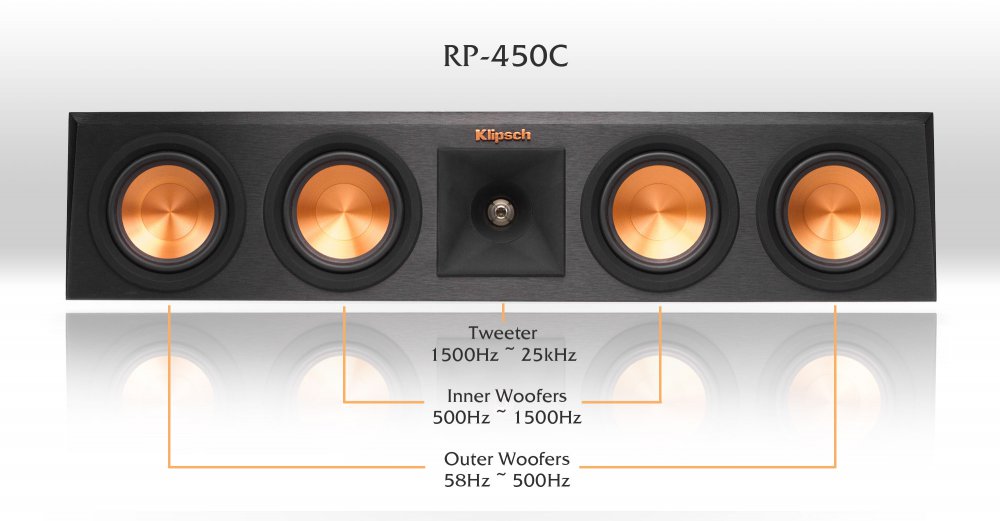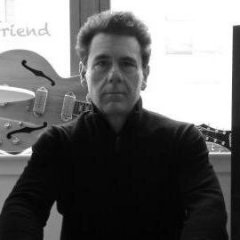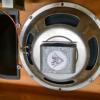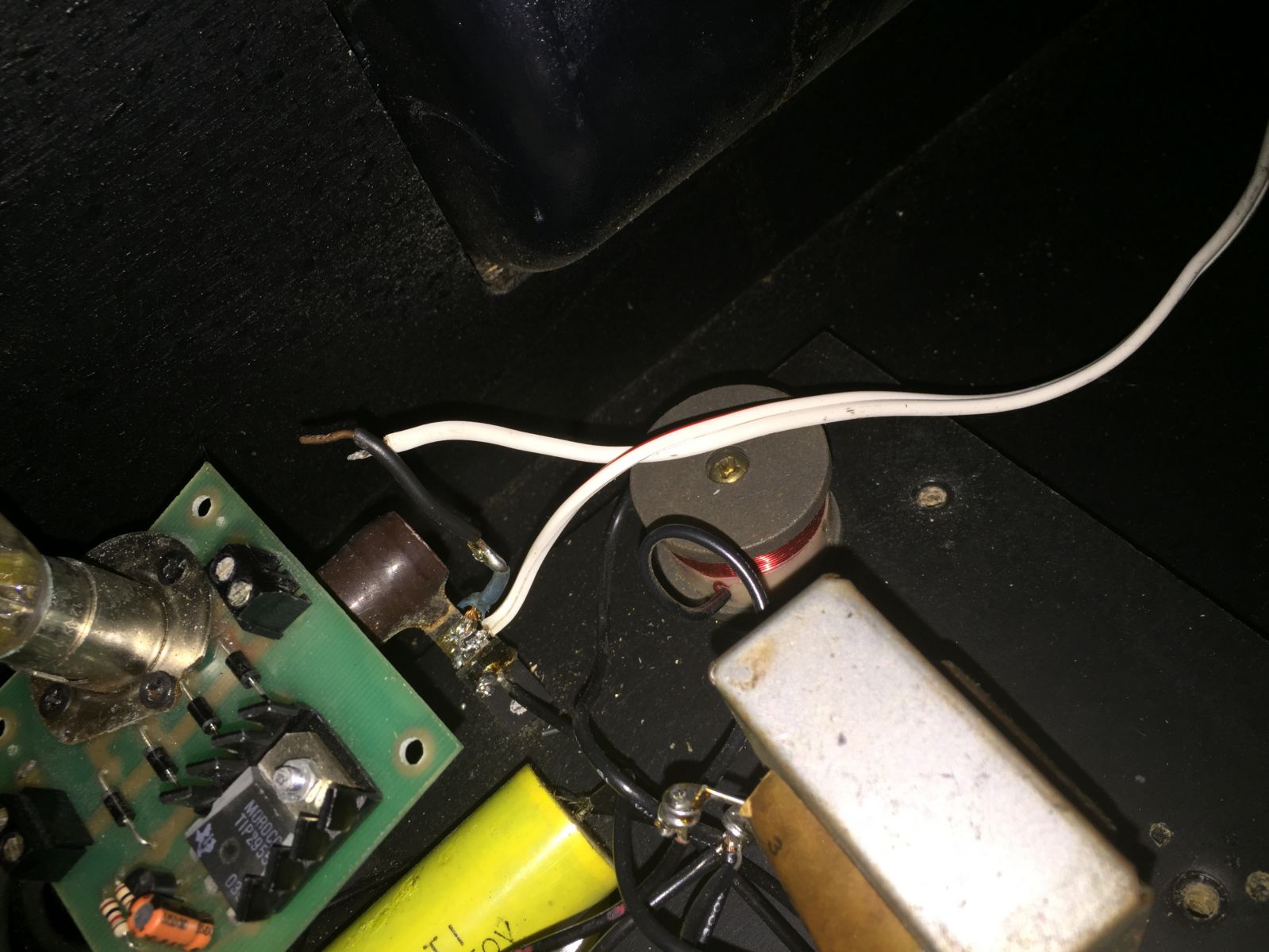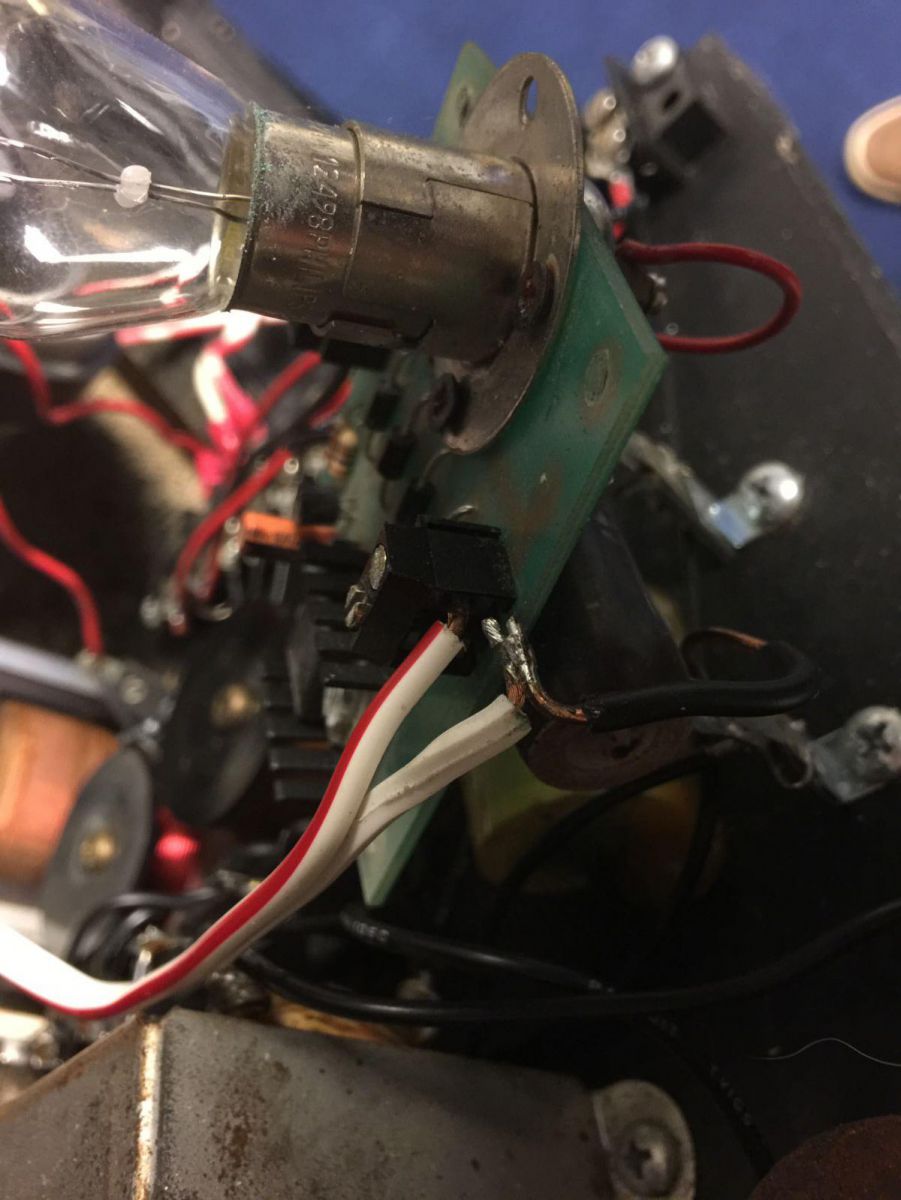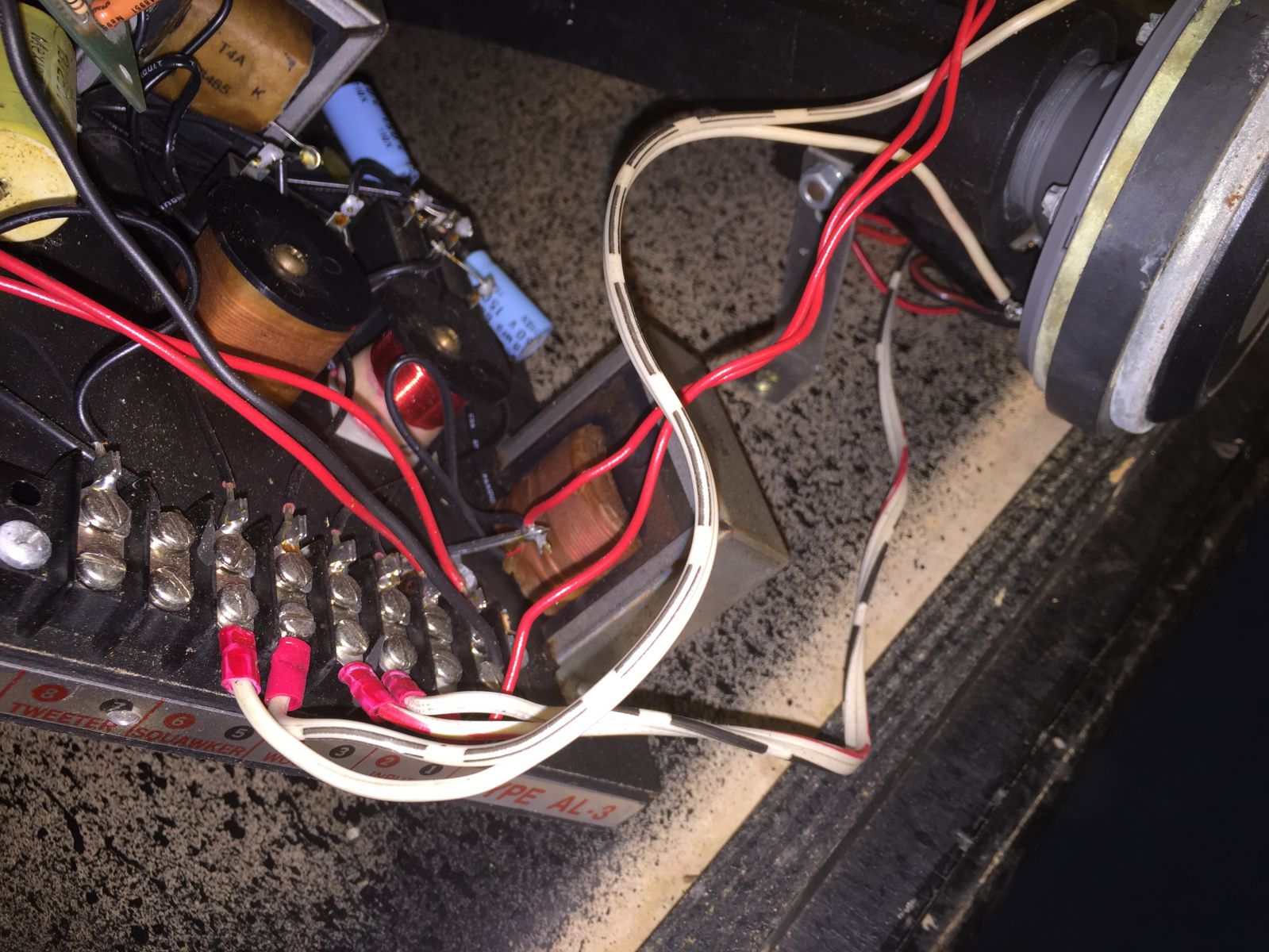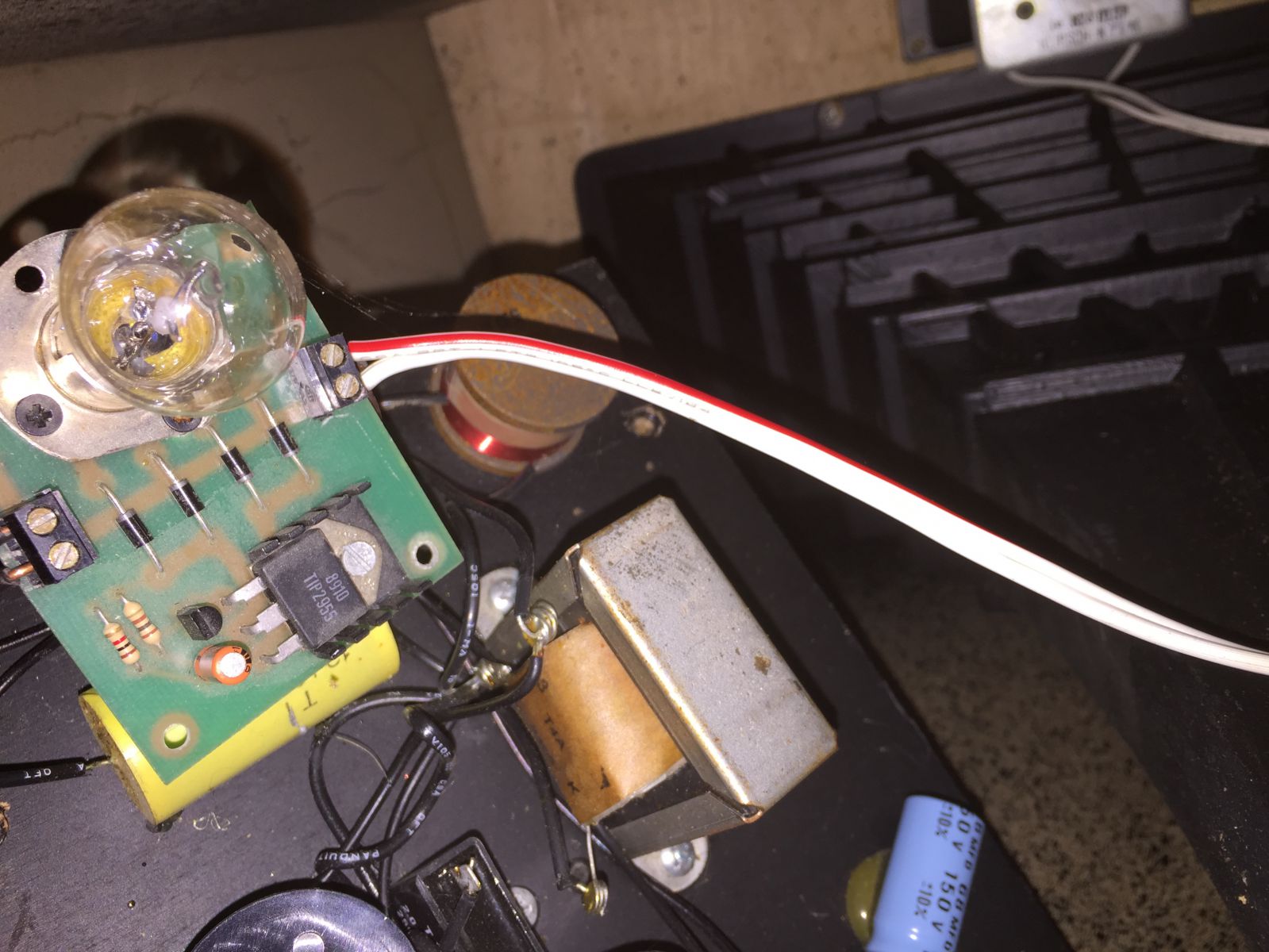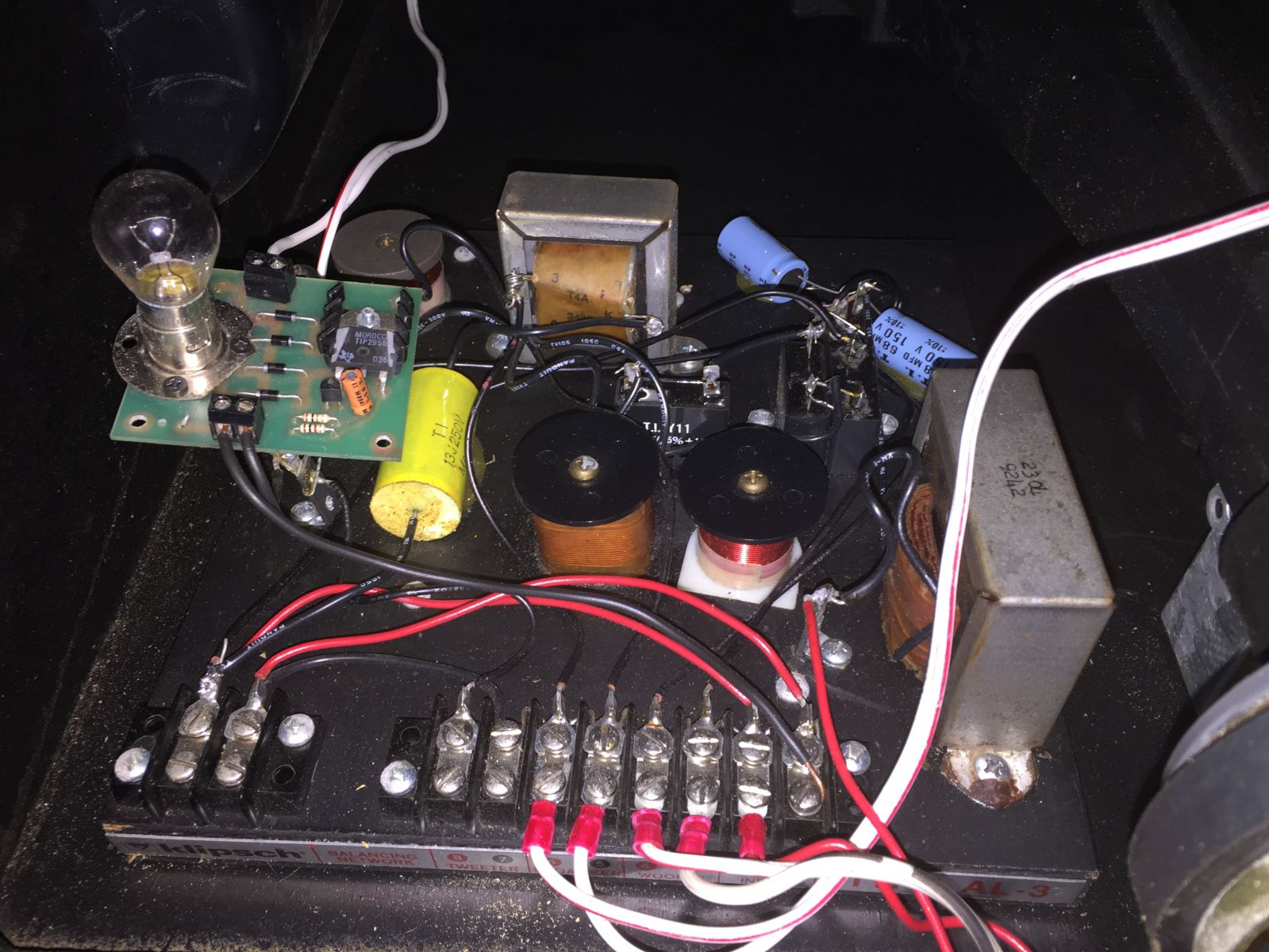Search the Community
Showing results for tags 'crossover'.
-
So i picked up some Cornwalls a couple weeks ago. Missing tweeters and one woofer. Had a spare woofer laying around. Ordered Crites CT-120 and installed. My first impression was they lacked the detail of my La Scala. I am running them in tandem with my La Scalas so this is a "side by side comparison". Coincidentally, the La Scala and the Cornwalls are "U"... 1980 models. La Scala is AA crossover and the Cornwall is the B crossover. A good audio friend of mine came over and we recapped the crossovers real quick last Saturday. Swapping the 4 uF for a 3 (I believe) and he tweaked my parametric a tad (400hz +3db) and they definitely sound better but when run together with the La Scalas I find that I'm not too crazy about them (the Cornwalls). I'm curious about suggested mods for the Cornwalls? I have a 2nd pair of La Scala that will get the bass bin mod AND custom crossovers a la my friend who's La Scalas completely blow me away. In the long run, I picture a La Scala in all four corners (!) and the Cornwalls in my den. Thoughts, suggestions welcome. Is this how the Cornscala came to be?!?
-
I have three pairs of RP-140SA speakers in my 7.1.2 set up and I am having trouble with the crossover setting for the RP-140SA. According to the spec sheet, the frequency response for the speaker, "conforms to Dolby Atmos Specification." Apparently this is some secret thing because I can't find it anywhere, at least for home theaters. My pre/pro does the auto-eq routine but like most, it varies and sometimes the RP-140SA crossovers are calculated at 40Hz (yeah right!) and sometimes they are 120Hz + or - 40Hz. I don't know why it's some secretive thing, but it would be nice to know what the bottom range is so I don't over-drive them. Does anyone know what the low end of the frequency response is? I'm sorry to sound like this, but I just find it frustrating that this basic number isn't published on Klipsch's or Dolby's site.
- 27 replies
-
- 1
-

-
- atmos
- frequency response
-
(and 3 more)
Tagged with:
-
RP-450C has followings: Crossover frequency: 500Hz/1500Hz Frequency Response:58-25kHz; Does it mean: 1. Tweeter's Frequency range (1500Hz ~ 25kHz) 2. Inner 2 woofers' frequency range (500Hz ~ 1500Hz) 3. Outer 2 woofers' frequency range (58Hz ~ 500Hz) As illustrated in the attached photo. And do Voice/dialogue frequencies handled by inner woofers only ?
-
Hi there, Not sure if this subject has been covered, but trying to go through 1000+ topics and nothing's coming up on search. I have the following for my setup: RF-82 (Front) - 33Hz - 23kHz +/- 3dB RC-52 (Centre) - 67Hz - 23kHz +/- 3dB RS-52 (Surround) - 62Hz - 23kHz +/- 3dB Klipsch SW110 sub. Yamaha RXV-675 for my receiver. I've been trying to figure out the right crossover frequency for my setup and I'm just a little lost/confused. The THX guide recommends 80Hz as the general setting if you have a receiver that allows you to only setup Large/Small speakers, however... from what I've been reading and if I understand it correctly, my fronts are rated for 40Hz, my Centre and Surround are rated for 80Hz (since I can't select 70, 80 is next). I've also read that a better choice is to set to set the front speakers as Large instead of Small and do LFE + Front but at 90HZ. This would ensure that all speakers are pushing out just the right frequencies and all the good stuff goes to the front and sub for clean sound. It looks like because of the wide gap of the front and all other speakers that a receiver that lets you configure the crossover individually would work best, but that's not an option now, so striking the right balance is what I can go for. YPAO is useless lol I like doing my configuration manually; measure the distance of speakers and configure levels with a SPL meter. I'm just trying to figure out what the RIGHT crossover frequency is for this setup so it kicks butt. Sounds are either too much bass and possibly overlap the other sounds (sub configured for bypass by turning the low-pass filter at max and controlling crossover on AVR) which is why I have a hard time making out dialogue and surround effects. I've kind of compensated for this by raising the level in the center channel on the receiver and doing the same for sides. When I turn up the crossover I get too little bass and know I'm missing out on what these speakers can do. I also can't tell the difference between regular DTS and DTS-MA... my receiver supports both so content is not the issue. Just looking for what Klipsch can say about this and others so I can gauge what others who have the same issue are doing. Maybe I'm needing more tinkering around...
-
First post here...noob to the site. Bear with me....I'm old too! Testing the waters, updating my Vintage K-horns and looking to finance it...at least partially anyway, through the sale of some vintage parts. I don't really know the value and need some guidance....some price range perhaps. I bought my Khorns in the early 80's. I sent a letter (dating myself here) to Klipsch inquiring about updates to my new acquisitions and they responded with the history of my speakers (built in 1977, BBU) and told me about the upgrades available at that time. That was 1984, I have the original 1977 vintage K33 woofers in pristine condition, in Klipsch boxes, and the 1984 "upgrade" crossovers the AK-7's. they are also in excellent condition save for some dust and what seems to be the standard cankered and corroded driver leads, greenish in color within the insulation. I would appreciate any insight my fellow Klipsch fans can provide!
-
Built by Mr. Crites. I unscrewed the components and pulled them off the board as one. Veneered the stock Cedar boards in Tigerwood, lacquered them and screwed everything back on. Wanted to match the wood to a La Scala project I was working on. Replaced the tweeter cap with the new Jantzen Alumen Z-CAP made for tweeters and mids in passive networks. See the website if you like. The boards don't make them sound any better of course but they look nice and are unique. The Jantzen caps were $75.00 for the pair. They are new with very few hours on them but have made a nice change in the high end. The A/4500's are $230.00 a pair new. I will leave in the Jantzen caps and toss in the Sonicaps it came with. $180.00 including shipping and PayPal fees.
-
Hi all! This is my first thread here. It's been great being able to have access to all the information and expertise contained in the community. Thanks to all the members who I have learned from. I am the proud owner of three pairs of Klipsch speakers. Quartets, earlier Heresy ii and Tangent 500. The Quartets and Tangent 500s have upgraded crossover capacitors. The Quartets have Crites titanium tweeter diaphragms. The Tangent 500s have had their cabs extensively braced and dampened so that they are very quiet and well damped. The Heresy ii are stock. I find that the Heresy ii are my favourite. This is because the other two pairs both have an odd thickness to vocals, especially female vocals, that makes them sound as though there is an emphasis on the deeper notes of all vocals. It's a subtle, but noticeable emphasis on the lower midrange that sounds unnatural and is distracting. Crossover upgrades were done with higher quality caps of the same values, and they had this problem before and after the cap upgrades. I'm wondering if this is something that anyone else has noticed, and if there is anything that I can change in the crossover or elsewhere that might solve this issue. I use mostly my own DIY single ended tube amps to power the speakers. Any advice of recommendations would be appreciated.
-
Anyone tried this new capacitor that Jantzen has designed specifically for tweeter and mid sections of a passive crossover? http://www.jantzen-audio.com/alumen-z-cap/ I have a pair on the way to try with Crites tweeters in my La Scala project. Mids will be next if these work out.
-
Greetings. Apologies in advance for my first post being a question. I've spent most the day on the forum researching and have all but made myself dizzy trying to understand hz ranges and crossover frequencies which leads me to my question. I have a completely all new setup replacing an outdated system. I currently have the R26 floors, R25 center, R15 surrounds, and 1 R10 Sub hooked to an Onkyo TX-NR656 receiver. Originally I ran the AccuEQ that came with it, but wasn't happy with the output. I checked the settings and it had the crossovers all over the place and the speaker distances were way off so I went to manual mode. According to receiver specs the available range is 40Hz-200Hz for all but the sub. The sub has a range of 80Hz-120Hz. All decibel levels are set at 0. I'm really not a dumb person, but for the life of me I can't wrap my head around frequency ranges and crossovers, etc. Most of the use will be for tv and movies as well as some occasional music, maybe 10% of the time. Anyone willing to offer a newbie to AV some layman understanding as well as maybe some settings to try. I do know that with the Onkyo on the setup screen says to set floors to "full range", but is that always best? Anyhow, thanks in advance!
-
I'm selling my barely used B2 crossovers by Aletheia Audio. I installed them mid August (sounded wonderful) and then bought khorns 3 weeks later. Maybe 20 hours on them max. Built with Jensen, Dayton, and paper in oil. See pics. There are holes in the mounting board as I did install them. Asking $585 plus shipping (net to me if using PayPal).
-
Earlier today I modified my Type A Khorn crossovers to support the 4500Hz CT-120 crossover point. I did it in such a way that I could nearly instantly A/B original/4500Hz by using a DPDT switch to introduce an additional 2uF capacitance in parallel with the 2uF tweeter cap and also a 500uH inductor into the squawker path. Note that you CANNOT perform this test while using the stock K77; as others have pointed out, it cannot handle the additional power supplied to it by the increased bandwidth. My listening choices were three very familiar tracks (to me, anyway) Steven Wilson - Hand. Cannot. Erase. - Track 1 : First Regret / 3 Years Older Nidarosdomens jentekor & TrondheimSolistene - MAGNIFICAT - Track 4 : Et misericordia Nidarosdomens jentekor & TrondheimSolistene - MAGNIFICAT - Track 5: Fecit potentiam I can definitely hear a difference in the midrange when I A/B the mods. Quite a lot of the harshness in the midrange is greatly reduced. This is most apparent to me in the female vocals on Track 5 of MAGNIFICAT. I liked it so much that I listened to a few hours of Steely Dan, Ozric Tentacles, Bucky Pizzarelli, and Animals as Leaders... after which I stopped the A/B and made the mods more permanent. For those interested in the diagram, I can provide it as a PM on request.
-
I have inherited a pair of Legend KLF-30s but one of them is barely putting out any sound and it seems to be just from the tweeter. I confirmed it has a good sound signal from the receiver by switching speaker wires around plus I looked inside the enclosure by removing the crossover assembly and do not see any loose wires. They have been in climate controlled storage for 3 years and have been moved only once or twice after initial installation so I don't think it got dropped so as to dislodge a connection but something is broken. I see Crites offers a cross-over repair kit for $80 as well as replacement crossovers for $280 a pair. Is that a good way to go? I am not going to keep them as they are just too big for our place so if I can just solder on a new capacitor from a Crites repair kit that would be fine with me but that seems too simple to be true. I am no technician so I guess I need a repair guy in Houston - anyone no of a good shop? Any advice will be greatly appreciated!
-
AA's...
-
Hi there, I have a pair of first generation KG4's that have the Crites titanium drivers as well as his crossover networks. These speakers have always sounded fabulous with my old, integrated transistor amp. The top end was always smooth and silky, yet very revealing without any harshness. I recently purchased a high end tube amp and now my favorite speakers hurt my ears! There is an upper-midrange glare that has appeared that makes these speakers very unlistenable and no longer balanced. Using a spectrum analyzer, the offending frequency is in the 2k - 3.8k range. The caps in the crossover network are 3uF and 8uF. I read online here that the crossover frequency for the KG4's is 1800Hz. I think if I changed the crossover frequency to a higher value, that would reduce or eliminate the glare by sending more highs to the the double 8" drivers, correct? Sorry, I don't know enough about electronics to experiment with changing these values without some guidance. Would any of you know what values I should try to change the crossover frequency? Or, is there another approach to remedying this upper midrange glare? Thanks in advance for any help you can lend. Cheers!
-
This would be for a Klipschorn, but it might also be for a LaScala, a Belle, or a Heresy. I am wondering what might happen if I used a 15 inch powered subwoofer in a Klipschorn. The way this might happen would be to put the woofer itself in the Klipschorn (it would be one that needed a new woofer anyway) and run the woofer leads on the Klipschorn crossover to the subwoofer amp. This would mean that the subwoofer amp would need to have speaker level inputs as well as line level inputs. You should be able to take the leads from the crossover and split the pair into two pairs for each speaker input in the subwoofer amp, putting a mono signal to each channel in the subwoofer amp. If successful, you might strengthen and extend that bottom end. Ideally, you might take a Klipschorn all the way down to 20 hz. Having said all that, it appears that a Klipschorn crossover sends signals below 400 hz to the woofer. A powered sub would likely cut off at 100 hz or 150 hz, leaving a gap for signals under 400 hz and over that cutoff frequency. We don't want that. So, would it be possible to bypass that control on the subwoofer amp so that none of the signal was cutoff? Then, (theoretically) the Klipschorn crossover would send everything under 400 hz to the subwoofer amp and in turn that would be passed on to the subwoofer's woofer, now the woofer inside the Klipschorn. If would be easy enough to mount the subwoofer amp somewhere around back of the Klipschorn so it looks good. Although all frequencies could then go through, the Klipschorn crossover would not let high frequencies ever reach the subwoofer amp. Before you make the "drawing a mustache and/or glasses on the Mona Lisa" comment, note that I did NOT say I was going to do this. I said I was wondering about it. I do realize that if this were done, it would have to be done two times for two speakers. Also, the cost might be ridiculous. However, I would like to stay focused on the "what if" and not go to the "why would you?". So, is it possible (and reasonably easy) to bypass the control on a powered subwoofer amp that sets the cutoff frequency, such that all frequencies received go to the amp and to the woofer? If some models could allow this, which ones are they? What other technical issues or challenges or tasks might arise and how would they be dealt with? FYI, I have a very old Klipschorn cabinet in very good shape and I am going to restore the guts and use it as a center channel, flanked by a pair of LaScala's. I would run a mono signal to the Klipschorn and a stereo signal to the LaScala's, using separate amps. Once I get the Klipschorn up and running, the rest is relatively easy. I don't mind having to use multiple amps. So, let the conversation begin.
-
I have a pair of 1984 first gen KG4's (even though they are listed as starting production in 1985, the labels on the back say 1984). I never liked these speakers! They sounded very harsh and edgy, yet yielded a very good sound stage, but they just fatigued my ears. Five years ago I read on one of the Klipsch forums about Bob Crites having designed and contracted a fabricator to make a titanium replacement for the phenolic horn drivers showing scope readings of a virtually, very flat response on supposedly sounding much smoother and liquid. For about $50 I ordered the pair and swapped them in and everything that people were saying was true. Very smooth, open, and airy, but without the jagged harshness. It was like listening to a completely different speaker -- one I fell in love with and became my main speakers. A couple of weeks ago, I read about the capacitors loosing their life around the 20 year mark and it hit me that the caps in my 1984 KG4's are now 31 years old. When back to Bob Crites' website and for $100 I could send him the original networks for a cap replacement, or for $200 I could receive new networks with all upgraded materials including new chokes, etc. -- I opted for the latter. I ended up removing all of the old “stacked-up” networks of this first gen that had everything glued up in a pile on the back of the input panel – turns out that the choke and transformer? (coiled bobbin) just popped off the plastic input back panel by prying a flat head underneath them and giving a little twist, removed the 3 screws, popped off the one cap that was glued, and cut the wires to the terminals. Then new network board fits on the wood floor of the bottom of the cabinet attached with velcro. After I finished wiring the first cab, I decided to do an A/B comparison between your network and the original 31 year old network. I conducted a very good test condition by putting on a mono LP, The Kingston Trio, and threw the balance knob Left/Right to compare them back and forth… let me tell you something, it was a dramatic difference! The old network sounded like the banjo was being played underneath a quilt. So, even though the speaker cab with the new network sounded brighter, and more open and airy, I would say it wasn’t adding anything, but simply allowing what was naturally in the recording to come through, whereas, the 31 year old network was not allowing all the highs to pass through to the horn. When I listened to the speaker cab that still had the original network, it was a kin to turning the treble control about 3/4’s the way down. As far as the bass, I’m not sure if it’s in my head or not, but it sounded a little tighter – just as strong as before, but with a little less resonance. Once again, Bob Crites has amazed me with his quality designs and engineering. I now have the ultimate KG4’s with Crites’ titanium horn drivers and upgraded, new networks! BTW, they are works of art just to look at (see before and after pics). And because the new networks are mounted on new cedar boards, they smell good too! I’ll never have to worry about moths in my speaker cabs I'm sure all of you know about Bob's Klipsch upgrades and maintenance services, but just in case you don't: www.critesspeakers.com Original 1984 network: New Bob Crites network:
-
Hello, I just picked up my fist pair of Klipsch's...a pair of evidently early Heresy's. I would like to learn as much as I can about them, eg, date of manufacture, driver details, original grill type, etc. One of the tweeters is not working, and I suspect the crossover could use a refresh. Looks like CritesSpeakers is the place to go for repairs and crossovers? The serial number for one of them is 10M053. Thanks for any info.
-
I'm looking at B networks in late 60's Cornwalls with stock horns and drivers. (K77, K55, K33) I want to keep this pair stock or at least very close. I would like to hear from those who have experience comparing the B to the B2 network in Cornwalls. I will recap the B networks but it doesn't look like much trouble to change it to a B2 if it is worthwhile. How does the B sound compared to the B2? What does the B2 change about the B? I am also looking at getting another pair of networks from Dean but that will be for a different pair of speakers. If I could afford it I would just get 2 more pairs from Dean but I also like the idea of keeping one pair close to stock. Modifying the B network a bit doesn't bother me much though. I'm considering Jensens or Jupiters if they ever release their new model.
-
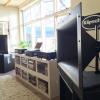
Detail of the (non-original) tweeter protection.
iSpotif posted a gallery image in Members Albums Category
From the album: Restoration La Scala Industrial (part 1)
© Frank van Kasteren
-

Detail of the (non-original) tweeter protection.
iSpotif posted a gallery image in Members Albums Category
From the album: Restoration La Scala Industrial (part 1)
© Frank van Kasteren
-
From the album: Restoration La Scala Industrial (part 1)
© Frank van Kasteren
-
- crossover
- speakercables
-
(and 6 more)
Tagged with:
-

Detail of the (non-original) tweeter protection.
iSpotif posted a gallery image in Members Albums Category
From the album: Restoration La Scala Industrial (part 1)
© Frank van Kasteren
-
From the album: Restoration La Scala Industrial (part 1)
The AL-3 crossover is in a very good shape, but not completely original. The Polyswitch tweeter protection is replaced by an electronic tweeter protection with… a light bulp!© Frank van Kasteren
-
Hi, This is my first post. I checked other post to see if I could find an answer. I didn't see one so I thought I would ask. I have a pair of LaScala industrial speakers installed at my church. Recently one speaker started losing the lows. At first I thought it completely quit working, but upon further inspection I could hear sound out of the high/mid speaker. This pair has a separate high/mid cabinet and a woofer cabinet. The problem is also intermittent which made it really hard to chase down at first. I am powering them with a QSC RMX 1450 amp. I believe the problem is in the crossover but not sure. I a little over my head. Nothing looks like it has gotten hot or going bad. Any help would be appreciated Thanks, Nick



